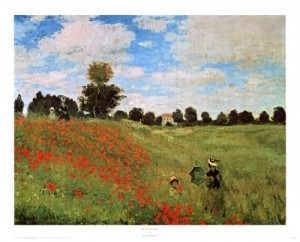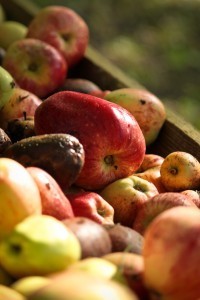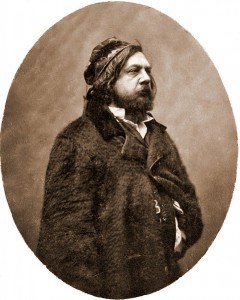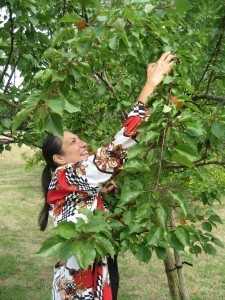Hannah Fielding's Blog, page 148
September 7, 2012
Ransom My Heart by Meg Cabot
Blurb:
When beautiful, spirited Finnula Crais kidnaps the dashing knight Hugh Fitzstephen, she has no idea that she’s ensnared the new Earl of Stephensgate on his way home from the Crusades. Nor does she realise that Hugh is quite happy to be kidnapped by an enchanting tomboy, and will do anything it takes to avoid being rescued. With Finnula determined to hold Hugh to ransom, and Hugh equally determined to steal Finnula’s heart, it isn’t long before the fireworks start! And just when it looks as if there might be a happy ending, disaster strikes. When an attempt is made on the new Earl’s life, there is only one suspect – and even if he loves her dearly, Hugh can’t let her get away with it . . .
The cover of this book drew me in – classical and romantic – and the book did not disappoint. I found it to be a refreshingly different historical romance, in that it has a unique blend of the conventions of the genre and also elements of the most contemporary romances in terms of characterisation and writing style.
I really enjoyed Meg’s language in the book, which draws upon ‘ye olde’ English without reaching the point that the reader is lost or bored. I especially like her inclusion of quite modern imagery, such as this simile: ‘Finnula Crais, like a splinter, had worked her way beneath his skin with remarkable speed, and digging her out, he realized, was going to be no small task.’
The writing is witty and fun, and the story moves along with energy that kept me turning the pages. The story was interesting, with a good number of twists, and believable – despite the very twenty-first-century feeling heroine who is strong, sassy and courageous. Romance novels traditionally end with the marriage of the hero and heroine, and I liked the fact that in this book the wedding comes around halfway through, which allows us to see how Finnula and Hugh fare as husband and wife.
It’s a passionate and romantic book, and I thought the intimate scenes were well described. Meg remains sensitive to the fact that the heroine, Finnula, is young and inexperienced, and while during the time in which the book is set she would have been very much a woman (indeed, she’s on her second husband), a modern reader wants to feel comfortable that she is allowed to grow into maturity in her own time. At times, when reading about Finnula I found myself feeling like perhaps I was reading a young adult novel, but then Hugh reappeared – very much a man – and I shifted back to thinking this was an adult book. I expect it may work well as a crossover novel, though it is rather steamy for a young adult reader. Still, I was reading the likes of Mills and Boon in my teens…
Overall, a really good read I heartily recommend, and I will be looking out for other novels by this author in the historical romance genre.
Ransom My Heart
is available now from Amazon; click on the book cover below to visit the store.
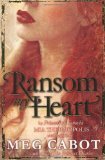

September 6, 2012
Cassis, France – a quaint seaside resort
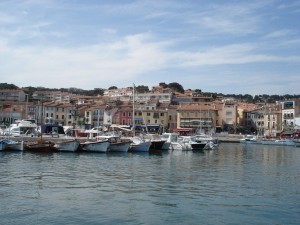 I like to visit when I’m staying in France; ideal for sitting in a pavement cafe with a citron pressé and watching the world go by.
I like to visit when I’m staying in France; ideal for sitting in a pavement cafe with a citron pressé and watching the world go by.
September 5, 2012
The most romantic artist
I recently ran a question survey via SurveyMonkey and Goodreads to discover people’s ‘most romantics’. For the question ‘Who is the most romantic artist?’, the results were as follows:
Monet: 64%
Renoir: 14%
Da Vinci: 12%
Van Gogh: 10%
The founder of Impressionist painting, Claude Monet, has topped the poll. It’s easy to see the appeal of Monet’s works – the colours, the brush strokes that lend a softness to the images, and the romanticism of the scenes depicted.
Monet lived in London, in Paris, in the Netherlands and finally in Giverny, Normandy, where he painted some of his most remembered works. He is well known for his paintings of his gardens in Giverny, including several of water lilies. One of my favourite paintings is Poppies Blooming, 1873; the child in me longs to walk down a hill among poppies so tall!
Interestingly, other polls to find the most romantic artist/artwork have had quite different results:
The Art Fund charity found Paul Gauguin’s Nevermore to be Britain’s most romantic painting.
Two years later, another poll by The Art Fund found Romeo and Juliet by Frank Bernard Dicksee to be Britain’s most romantic artwork.
The Kiss by Gustav Klimt topped a poll for Valentine’s Day in America last year.
The point, I think, is that art appreciation comes down to personal taste. You may love Tate Modern; you may love Tate Britain; you may like both, or neither. But what is certain is that works of art have the capacity to arouse in us romantic sensibilities. We look at Monet’s Houses of Parliament, London and we are transported there; we can imagine ourselves in the scene, and it is a romantic experience.
The conclusion, therefore, is that if you are looking to kindle romance and daydreaming, your first port of call should be a museum or art gallery. But you’d have to travel far afield to see all of Monet’s works, so instead, take a look at this gallery: http://www.intermonet.com/oeuvre/.
September 4, 2012
Recipe: Apple Preserve
The county of Kent, where my English home is situated, is famous for many things. The White Cliffs of Dover. The Royal Navy heritage at Chatham. Canterbury Cathedral and Chaucer. Jools Holland, a Rochester resident. Hops and oast houses. But it is perhaps best known for its orchards. Pears and apples, in particular, are grown throughout the county, and are used in all sorts of produce. Local apple juice and pear juice are just delicious.
We have several apple trees in our garden, and when they bear fruit I pick as many as I can and use them in recipes. The following is a great recipe for using up apples from your garden, or just those at the bottom at the fruit bowl that no one’s eating! Being a preserve, if stored correctly in sterilised, sealed jars, it should last some months. And if you use a pretty jar and top, this can be a lovely, personal Christmas present.
Ingredients
2kg eating apples
200ml cider vinegar
250ml water
250g caster sugar
Ground cinnamon
Ground cloves
Ground allspice
Lemon zest
Vanilla essence
Peel, core and chop the apples and place in a large preserving pan.
Pour on the vinegar and water and sprinkle on the sugar.
Cook gently until the apples are soft when run through with a knife.
Mash up the apples (or if you want a smoother preserve, sieve it).
Weigh the apples, and split into batches of 250 grams.
Add to each batch 1 tablespoon of cinnamon, 1 tablespoon of lemon zest, 1/2 teaspoon of cloves, 1/2 teaspoon of allspice and one drop of vanilla essence.
Return to the pan and cook gently until thickened. Here’s a good information sheet for knowing when preserves are set: http://nchfp.uga.edu/how/can_07/jelly_point.html.
Pot up the preserve, store and serve when you’re ready.
Delicious on crumpets, scones, toast and tea cakes, and stirred into rice pudding or natural yoghurt.
September 3, 2012
A STUDY OF HANDS
I
IMPERIA
A sculptor showed to me one day
A hand, a Cleopatra’s lure,
Or an Aspasia’s, cast in clay,
Of masterwork a fragment pure.
Seized in a snowy kiss, and fair
As lily in the argent rise
Of dawn, like whitest poem there
Its beauty lay before mine eyes,
Bright in its pallor lustreless,
Reposing on a velvet bed,
Its fingers, weighted with their dress
Of jewels, delicately spread.
A little parted lay the thumb,
Showing the undulating line,
Beautiful, graceful, subtlesome,
Of its proud contour Florentine.
Strange hand! I wonder if it toyed
In silken locks of Don Juan,
Or on a gem-bright caftan joyed
To stroke the beard of some soldan;
Whether, as courtesan or queen,
Within its fingers fair and slight
Was pleasure’s gilded sceptre seen,
Or sceptre of a royal might!
But sweet and firm it must have lain
Full oft its touch of power rare
Upon the curling lion-mane
Of some chimera caught in air.
Imperial, idle fantasy,
And love of soft, luxurious things,
Frenzies of passion, wondrous, free,
Impossible dream-flutterings!
Romances wild, and poesy
Of hasheech and of wine, vain speeds
Beneath Bohemia’s brilliant sky
On unrestrained and maddened steeds!
All these were in the lines of it,
Of that white book with magic scrolled,
Where ciphers stood, by Venus writ,
That Love had trembled to behold.
II
LACENAIRE
Strange contrast was the severed hand
Of Lacenaire, the murderer dead,
Soaked in a powerful essence, and
Near by upon a cushion spread.
Letting a morbid fancy win,
I touched, despite my loathing sane,
The cold, hair-covered, slimy skin,
Not yet washed clean of deathly stain.
Yellow, uncanny, mummified,
Like to a Pharaoh’s hand it lay,
And stretched its faun-shaped fingers wide,
Crisp with temptation’s awful play;
As though an itch for flesh and gold
Lured them to horrors yet to be,
Twisting them roughly as of old,
Teasing their immobility.
There every vice and passion’s whim
Had seamed the flesh abundantly
With hideous hieroglyphs and grim,
That headsmen read with fluency.
There plainly writ in furrows fell,
I saw the deeds of sin and soil,
Scorchings from every fiery hell
Wherein corruptions seethe and boil.
There was a track of Capri’s vice,
Of lupanars and gaming-scores,
Fretted with wine and blood and dice,
Like ennui of old emperors.
Supple and fierce, it had some dower
Of grace unto the searching eye,
Some brutal fascination’s power,
A gladiator’s mastery.
Cold aristocracy of crime!
No plane inured, no hammer spent
The hand whose task for every time
Had but the knife for implement.
The hand of Lacenaire! No clue
Therein to labour’s honest pride!
False poet, and assassin true,
The Manfred of the gutter died!
September 1, 2012
Favourite writer: Théophile Gautier
Théophile Gautier was a great traveller, visiting places as diverse as Spain, Italy, Russia, Egypt and Algeria, and his writing based on the various places he visited are works of art. He has a knack of transporting you to the place and making you live the experience he is living. His descriptions are not only vivid, they are touching and so very romantic; they transport you into his world and make you dream. For Gautier, how the story is told is of more importance than the story itself. Reading him really inspires one to want to emulate such beauty. Wonderful!
Pierre Jules Théophile Gautier was one of several classic French writers whose works I studied at university and fell in love with. He was born in 1811 in Tarbes, southwest France, but was raised in Paris. Author Victor Hugo is credited for influencing Gautier to explore literature; until he met Hugo, Gautier was exploring painting as a medium for expression. He became a well-respected critic of the arts: literature, art, theatre, dance, and he experimented with poetry, but mainly he wrote articles for journals such as La Presse.
Just a snapshot of his poetry suffices to show Gautier’s mastery of language and his ability to create a vivid picture in your mind. The following two poems are translated from his collection of Romantic poetry Émaux et Camées (Enamels and Cameos). These, and others, are available at http://www.gutenberg.org/files/29521/29521-h/29521-h.htm.
As I read the first poem, I am swept away by the beauty of the words – each word conveys delight and adoration, the rhythm and rhyme is wonderful, and the choice of words is perfection itself: lure, pure, snowy kiss, fair as lily, whitest poem, reposing, velvet, delicately, undulating, beautiful, graceful, subtlesome, silken locks, gem-bright, gilded sceptre, soft, luxurious, passion, wondrous, free… and so on, and so on. The line that lingers in my mind is ‘Impossible dream-flutterings!’; so onomatopoeic in the translation (Rêves d’impossibilités in the original).
But then comes the second poem, and Gautier shows himself to be a master at creating mood, for he smashes through the romantic, soft, lovely mood created by his first poem from the very opening line: ‘Strange contrast was the severed hand’. Now, there is vivid vocabulary that creates mental images that disturb and chill: murderer dead, morbid, loathing, cold, hair-covered, slimy skin, deathly stain, yellow, uncanny, mummified, lured them to horrors, hideous hieroglyphs, grim, scorchings from every fiery hell, corruptions seethe and boil…
The juxtaposition of the two makes for powerful and evocative writing indeed.
August 31, 2012
Why Can’t I Be You by Allie Larkin
I was delighted to receive an advance copy of this contemporary women’s novel for review (if you prefer the word ‘chicklit’, it fits into this genre). The blurb intrigued me:
When Jenny Shaw hears someone shout “Jessie!” across a hotel lobby, she impulsively answers. All her life, Jenny has toed the line, but something propels her to seize the opportunity to become Jessie Morgan, a woman to whom she bears an uncanny resemblance. Lonely in her own life, Jenny is embraced by Jessie’s warm circle of friends—and finds unexpected romance. But when she delves into Jessie’s past, Jenny discovers a secret that spurs her to take another leap into the unknown.
I enjoy contemporary romances, of course, but I was also keen to read this book for the other elements it explores: friendship and identity and forgiveness.
What a warm, poignant, funny, engaging novel. I found it a refreshing change from the ‘fluffy’ women’s novels that abound; this one fits all the norms of the genre yet is much deeper and moving. I wondered whether I would find the plot – that a Jenny stumbles into pretending to be someone else – believable, and was pleased to find that I did. Poor Jenny; she is a character who invites empathy, lost as she is in her own identity and in a loneliness that she has always known.
The characters in the book are well developed and likeable; I especially liked Jessie’s friends Myra and Robbie, who leap off the page they are so vivid. The love interest, Gilbert, is just what you want for Jenny, the true Jenny – a man who trains guide dogs for a living, hikes in the great outdoors and is unafraid to stand up for his beliefs.
The plot kept me turning the pages, and without wanting to give much away, there are some moments when Jenny is really courageous that I was most affected by: as the plot unfolded I found myself rooting for Jenny more and more. This is a romance, but what I love about the book is that the core is Jenny’s development, rather than the development of the relationship, and the notion that you can only achieve that happy-ever-after once you’re being true to yourself.
Overall, a hearty recommendation for this book. If you feel like a little ‘me time’ or need a book to lift your mood, this is one to read.
Why Can’t I Be You is available to pre-order from Amazon.
August 30, 2012
The most romantic food
I recently ran a question survey via SurveyMonkey and Goodreads to discover people’s ‘most romantics’. For the question ‘What is the most romantic food?’, the results were as follows:
Chocolate: 50%
Strawberries: 36%
Ice cream: 7%
Oysters: 7%
Interestingly, while oysters are proven to stimulate desire, the jury is out on whether the clear winners here, chocolate and strawberries, are aphrodisiacs. Strawberries have a reputation in the romance field for their portrayal in the arts as a symbol of sensuality, and their many tiny seeds made them a symbol of fertility. They contain plenty of healthful vitamins and minerals (more Vitamin C, in fact, than any other berry), but there are no clear links to libido. Chocolate, meanwhile, has long been heralded as a powerful aphrodisiac, dating right back to the time of Aztecs. But according to the New York Times, no study has established a scientific link between chocolate and heightened sexual desire.
No doubt, like me, you are unimpressed by the lack of evidence – the proof is in the romantic mood created by these two foods. The scent, the taste, the feel of each in your mouth, all are conducive to getting in the mood.
So that would suggest that the ideal treat on a romantic date with your partner is a combination of chocolate and strawberries. Have you ever tried making chocolate-dipped strawberries? They’re very easy to make, and really are mouthwateringly good. Here’s a simple recipe to follow:
Ingredients:
Strawberries
Chocolate of your choice (the better the quality, the better the result)
Cover a baking sheet with foil.
Wash the strawberries but don’t hull them – the green stalks add to the visual appeal.
Melt the chocolate in a bowl set over a pan of boiling water, stirring constantly. Don’t overheat or the chocolate gets thick – as soon as it’s smooth, remove from the heat.
Dip the strawberries into the chocolate, one by one, and place on the baking tray. Twirl the strawberries in the mixture to get good coverage.
Place in the fridge for 30 minutes.
Serve that day, ideally at room temperature. Delicious with a glass of champagne!
Variations: Use different types of chocolate; sprinkle the strawberries with nuts, sprinkles or coconut; drizzle melted dark chocolate over white chocolate, and vice versa. Experiment with other fruits as well: frozen banana, mango, orange segments, kiwi, pineapple.
August 28, 2012
Agay, France – a view to inspire
 When I get writer’s block, I go for a long drive to Agay (about an hour away). The view on the corniche is breathtaking. The sea is of the most beautiful azure.
When I get writer’s block, I go for a long drive to Agay (about an hour away). The view on the corniche is breathtaking. The sea is of the most beautiful azure.
August 27, 2012
Twenty-five years since ‘nobody put Baby in a corner’
Twenty-five years ago this month the film Dirty Dancing was released in cinemas. A low-budget movie made by a new studio and with no stars in the lead roles (hard to believe now, but Jennifer Gray and Patrick Swayze were relatively unknown before the film), it has gone on to earn over $214 million, has inspired other films and a theatre show, and has been named the film most watched by women, ever.
What is it about this film that so draws us in? The music is wonderful, of course, and evocative of the era. The dancing is superbly choreographed – especially the final sequence. The plot is engaging, the acting excellent. But it is the love story that most engages us. What teenage girl did not dream of being swept away by a handsome, strong, virile man such as Johnny Castle? The class divide is of no importance; this film is all about breaking down barriers, about chemistry, connection and freedom.
I think, perhaps, the reason why female viewers connect so well to this film comes down to a clever positioning of point of view. Writers know well that point of view matters – you write from a character’s point of view in order to enable the reader to understand and identify with that character and to see the world through his/her eyes. The camera in a movie is the narrator in many senses, controlling what you see and how, and so by considering the camera as a person, you can engage the audience better. Steven Spielberg used point-of-view camera work to great effect in Jaws, which was the first film to have shots from the point of view of the killer (the shark). And the director of Dirty Dancing, Emile Ardolino, broke new ground by using a female point of view for camera work. So we have long up-and-down shots of Johnny’s physique, which of course engage the female viewer. Next time you watch the film, think about the camera as a narrator and see for yourself how feminine it is.
Here are some facts about the film you may not know:
The film is based on a true story – the teenage experiences of the screenwriter, Eleanor Bergstein.
The choreographer for the film, Kenny Ortega, was trained by Gene Kelly.
Actor Billy Zane was considered for the role of Johnny.
Temperatures were so hot during filming (sometimes 120 degrees) that on one day ten actors fainted.
The actors were encouraged to improvised, and the scene in which Baby keeps laughing as Johnny moves his hand down her body was not scripted.
Swayze’s song ‘She’s Like the Wind’ was co-written by him years earlier.
Swayze was paid $5 million to appear in a cameo role as a dance teacher in a prequel to the film released in 2004 (impressive considering he earned just $200,000 for the original!).
If all this talk of Dirty Dancing has piqued your interest, you may be interested to know that a remake is in production. But for me, nothing will beat the original, and especially the romance of ‘She’s Like the Wind’: http://www.youtube.com/watch?v=lU9p1WRfA9w.

